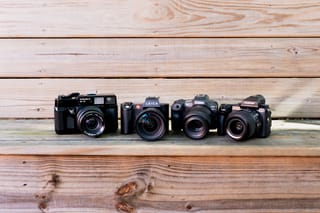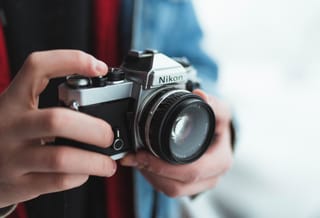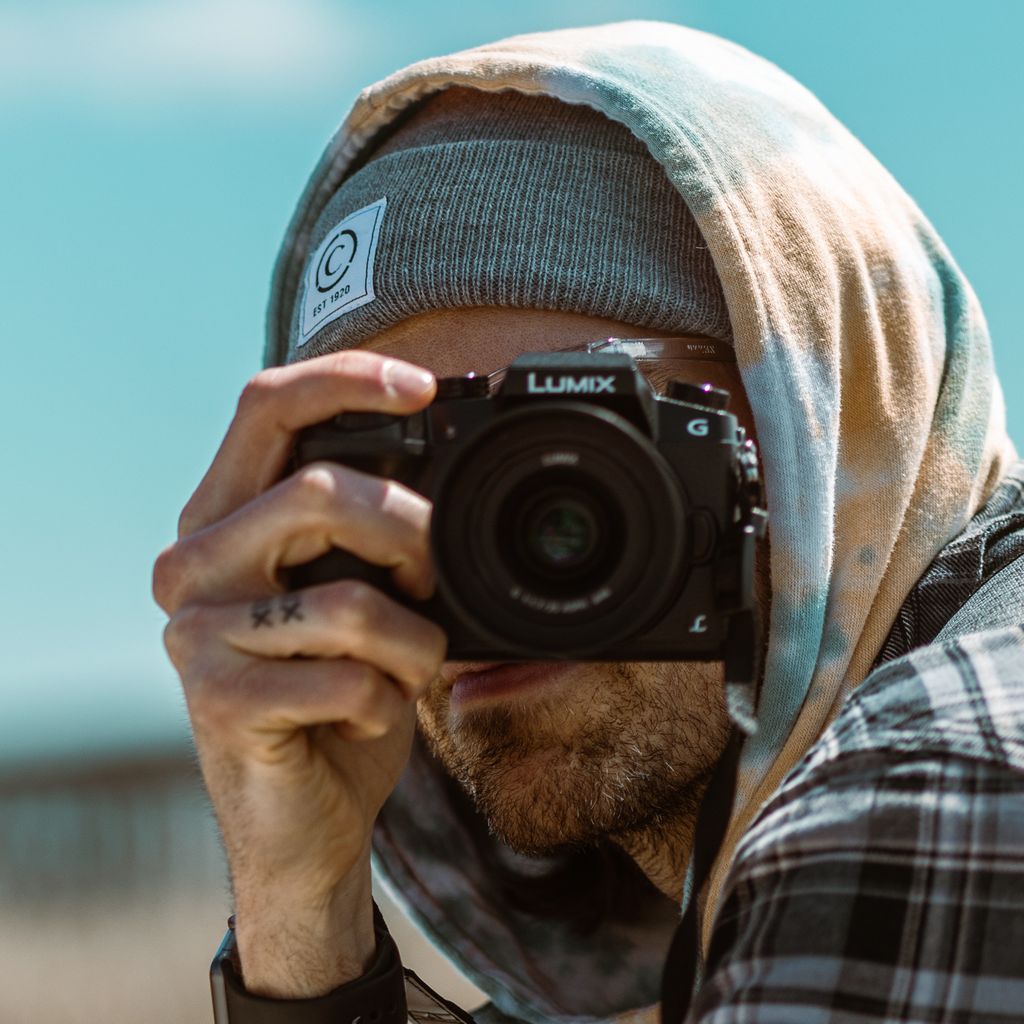
Mirrorless cameras have taken the photography industry by storm, with both novice and professional photographers making the switch to mirrorless systems. Mirrorless cameras are generally smaller and lighter, making them a desirable solution for photographers wanting a more portable camera that still has an interchangeable lens system. As reputable camera brands are offering mirrorless cameras with all the features of a DSLR, mirrorless cameras are quickly becoming an industry standard for photographers worldwide.
What is a mirrorless camera?
Unlike DSLR cameras, which use a “reflex” arrangement of a mirror + pentaprism (or pentamirror) to guide lens light to a (typically optical) viewfinder, mirrorless cameras exclusively send lens light to the digital sensor. Mirrorless cameras electronically relay a continuous real-time sensor feed for immediate display on a screen. The display screen might be a rear LCD screen on the camera exterior, an Electronic ViewFinder (EVF) behind an eyepiece, an external monitor connected by a cable, or even a mobile device connected wirelessly.
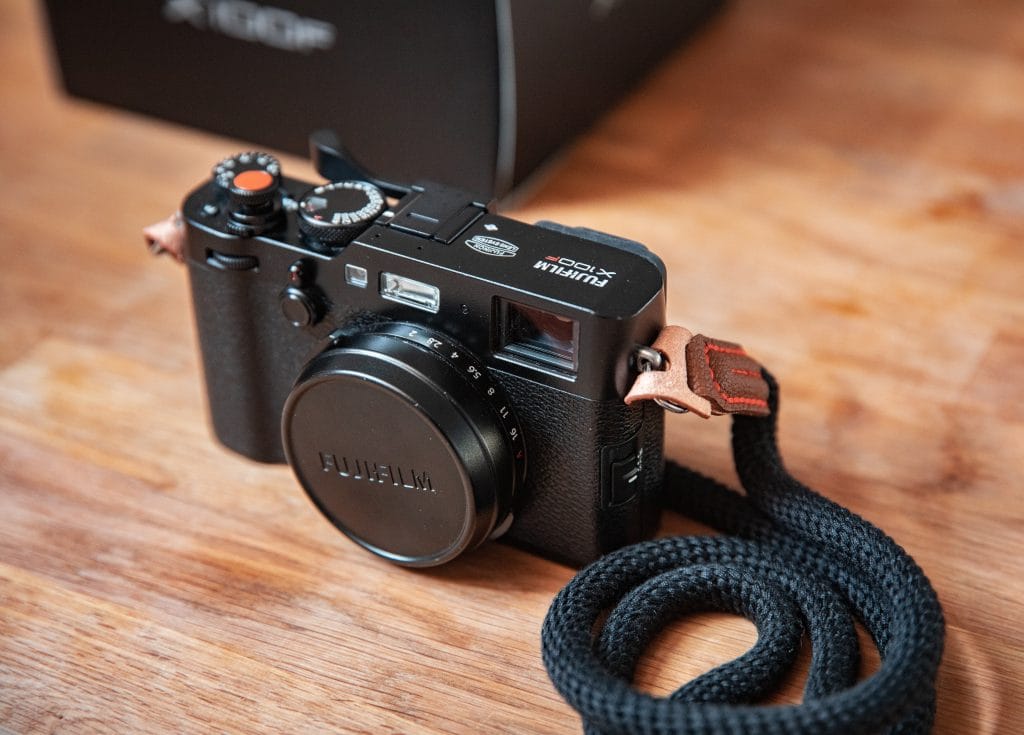
What are the advantages of mirrorless cameras?
There are a few notable advantages when it comes to mirrorless cameras over their DSLR counterparts, which have propelled them to the popularity we see today.
- Size – Because a large part of the camera was eliminated by cutting out the reflex mirror, mirrorless cameras are lighter and smaller making them a better option for professionals and beginners wanting a more portable, compact camera.
- Speed – Mirrorless cameras are generally faster because they remove the extra step of a mirror having to move out of the way of the optical path when the shutter is pressed. This allows for more rapid FPS (Frames Per Second) continuous shooting with better autofocus tracking, making them top choices for sports, wildlife, and other movement-based photography.
- Quieter system – With less mechanical components inside, mirrorless cameras are quieter than DSLRs, and many shutters can be set to silent.
- Technology – Mirrorless cameras are on the forefront of camera technology when it comes to important features like rapid autofocus, eye tracking, and in-camera image stabilization.
While many mirrorless cameras can cost upwards of $4,000 for the body alone, you can find plenty of quality options that take professional-grade photos without breaking the bank. In this article, we will explore the best mirrorless cameras under $1,000.
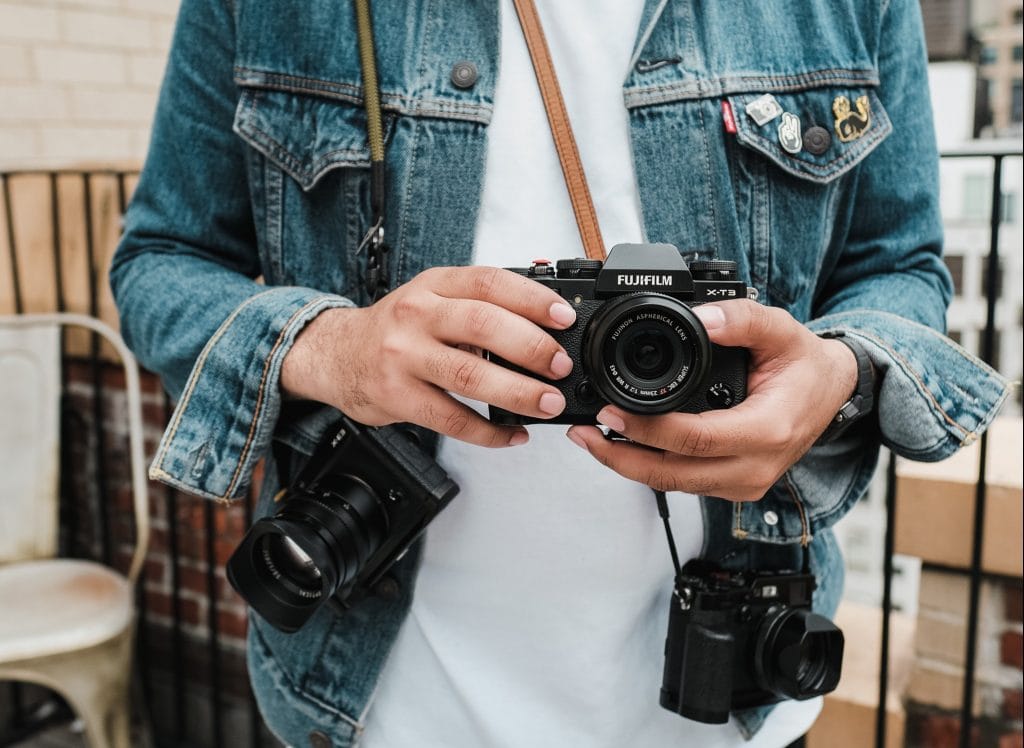
How we chose our top 10 cameras
We compiled a list of our favorite mirrorless cameras under $1,000 based on a number of criteria, including camera size and weight, sensor megapixels, image stabilization, sensor types, megapixels, price point, video quality, autofocus, battery life, and more. It’s important to note that the “best” camera for one person might not be the best for another. We’ve taken into account which mirrorless cameras are best for beginners, professionals, travel, video recording, portraits, low-light situations, landscape photography, and more!
*Please note that all prices listed are reflective of used models of these cameras in Excellent or Excellent+ grade currently available at KEH.
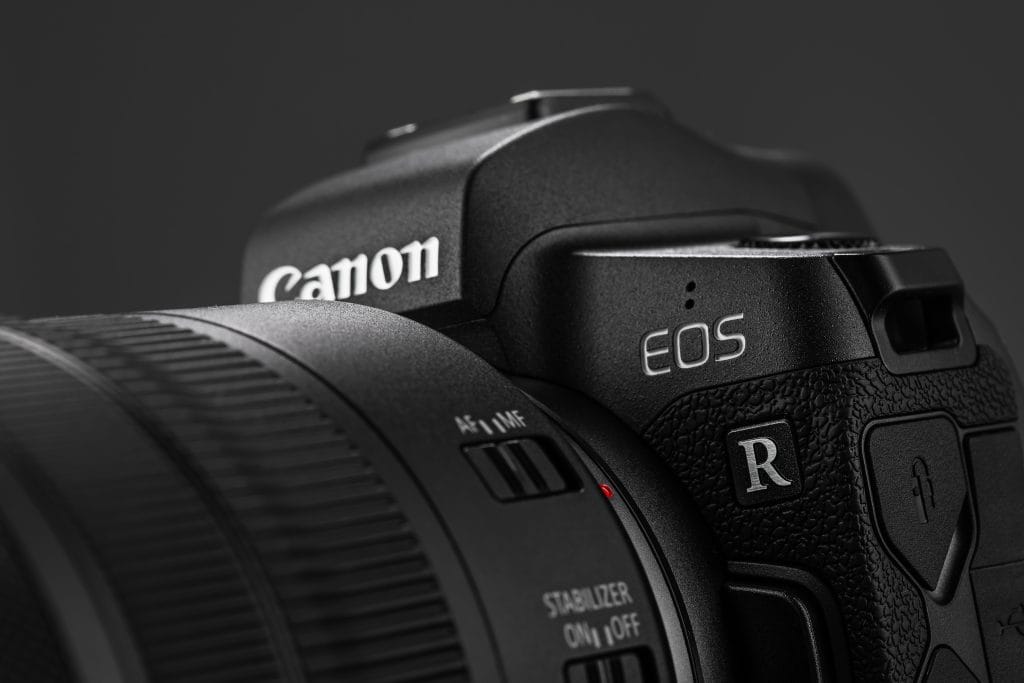
Our Top Pick
Our overall pick for the best mirrorless camera body under $1,000 is the Canon EOS RP. The Canon EOS RP is among the smallest and lightest full-frame cameras on the market, and a great full-frame mirrorless camera for beginners and professionals alike because of its price point. Canon has been a leader in the photography industry with SLR and DSLR cameras for decades, so it’s no surprise their mirrorless systems are top of the line.
The EOS RP has a full-frame sensor with 26.2 megapixels, 4k video, a 3-inch fully articulating touchscreen, WiFi and Bluetooth connectivity, and a compact size making it great for anyone from hobbyist to enthusiast
- Pros: Full-frame sensor, lightweight, one of the most affordable full-frame mirrorless cameras at launch ever
- Cons: Poor battery life, more expensive than others on the list

Best Full-frame Mirrorless Camera
The Sony Alpha 7 II is one of the best full-frame sensor mirrorless cameras under $1,000. Though it’s been superseded by the a7 III and now the a7 IV, the capabilities of the a7 II are still impressive, especially at the price point. The a7 II creates professional-quality images with a full-frame 24 megapixel sensor, in-camera stabilization, and fast autofocus system.
For beginner photographers or those looking to switch to a full-frame sensor without spending a lot, the Sony a7 II makes a strong choice.
- Pros: Large lens catalog from Sony, full-frame sensor
- Cons: Smaller batteries have lower life compared to newer models; more difficult in low-light scenarios
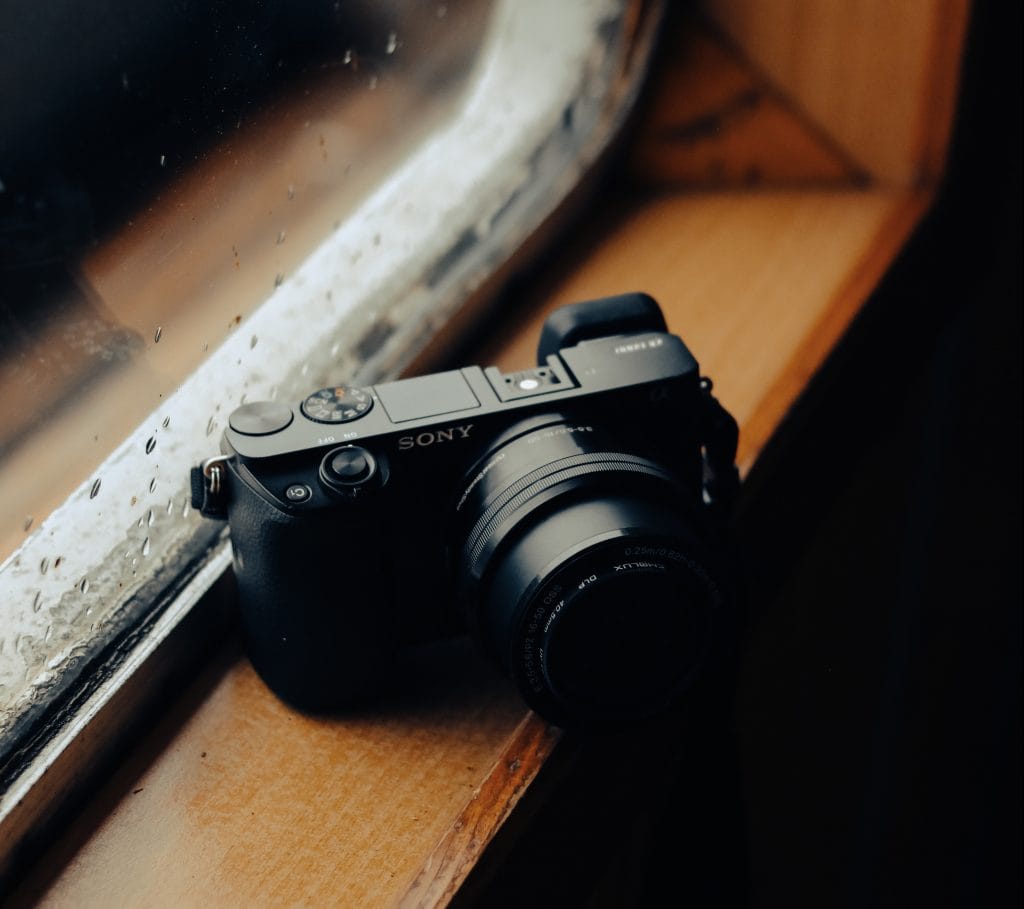
Best for Video
Mirrorless cameras under $1,000 with sharp 4K video are often hard to come by, but the Sony a6400 has powerful video capabilities for videographers and vloggers. The a6400 has continuous autofocus eye detection with 425 phase-detection, and 425 contrast AF points, which equates to really fast, really accurate autofocus. This autofocus ability makes the a6400 ideal for tracking subjects while recording video.
- Pros: 4K video and fast autofocus at a budget price; 24.2 MP sensor
- Cons: Cropped sensor; a bit outdated
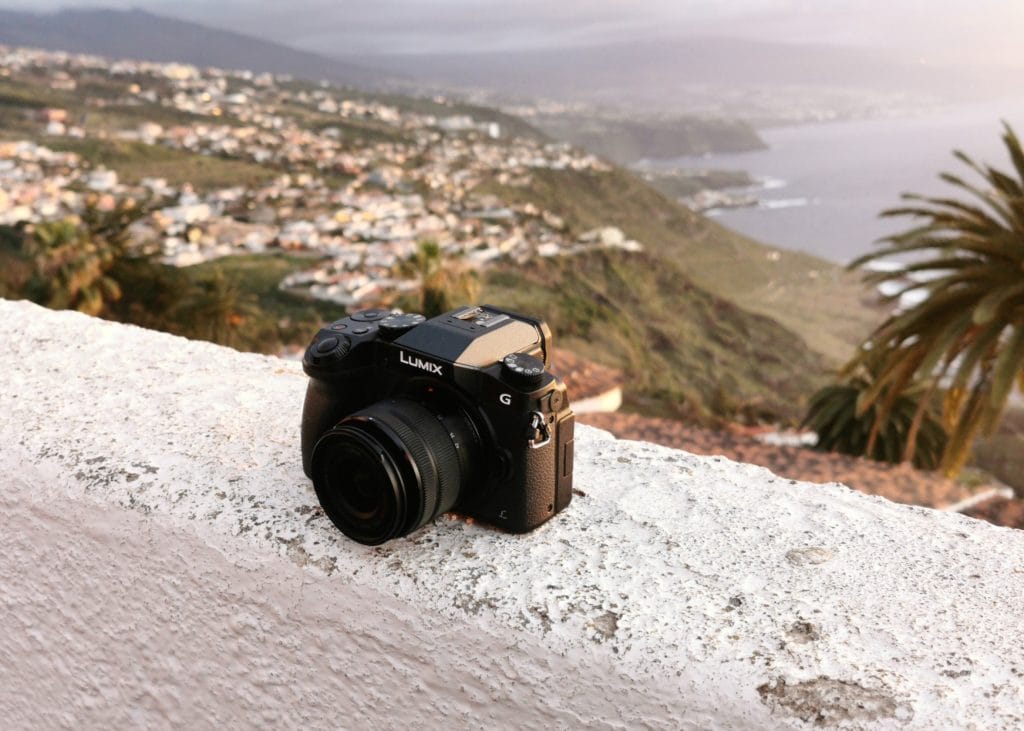
Best Budget Mirrorless Camera
If you’re on a budget, but want a camera that has more features and flexibility than a point and shoot, this camera is the one for you! This affordable Panasonic model was created for enthusiasts, but at this price point, makes a formidable option for beginners who want to get into photography casually and still produce great images.
The DMC-G85 offers a 16-megapixel CMOS sensor, 4K resolution video at 30 and 24 frames per second, a 3-inch swiveling touch-screen LCD monitor, and Panasonic low-light autofocus.
- Pros: Price point; compatible with over 20 lenses
- Cons: More dated than most others in our lineup; battery quality below average, keep a spare one handy
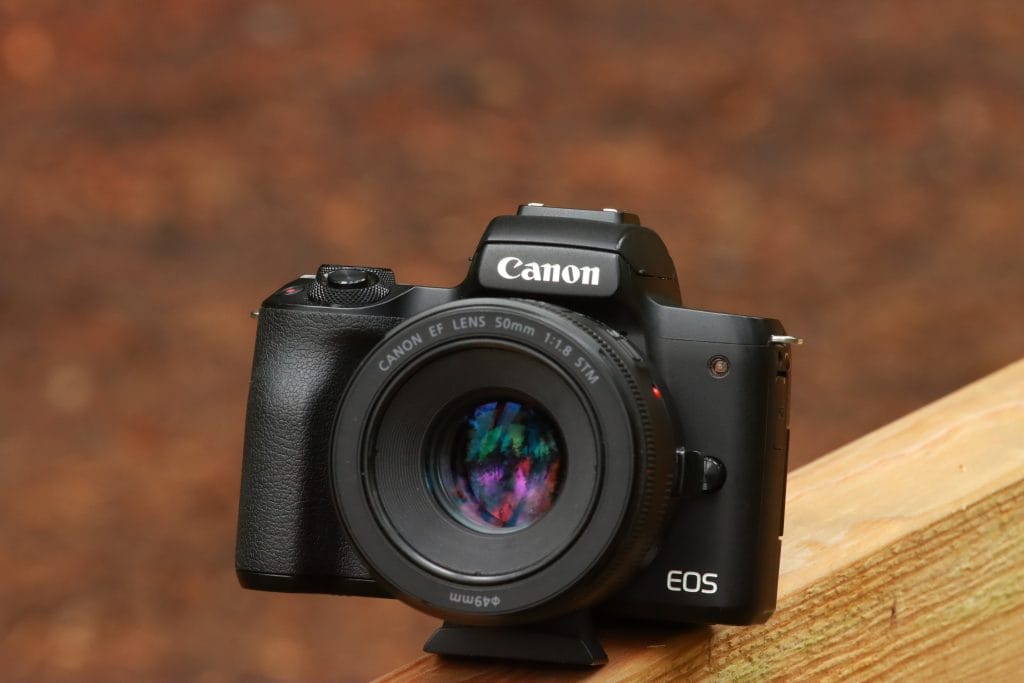
Best for Beginners
Most beginner photographers don’t want to spend a lot on a starter camera, especially if they won’t be using it frequently. Fortunately, you can still get a mirrorless camera with many of the elements of more expensive cameras for well under $1,000 with the Canon EOS M50 Mark II. The M50 Mark II has an APS-C CMOS sensor and packs an impressive 24.1 megapixels, 4K video, and continuous autofocus with eye tracking into a sleek frame.
This entry-level camera is great for beginners who want a simple, single-control dial and fully-articulating touchscreen LCD, and both Bluetooth and WiFi to easily transfer photos to a smartphone while on the go.
- Pros: Price point; 24.1 megapixels
- Cons: Less impressive technology than some of its competitors

Best for Professionals
Professional photographers looking for a versatile mirrorless camera under $1,000 should look no further than the Sony a7R II. The a7R II boasts a 42-megapixel full-frame sensor, making images exceptionally sharp. This camera also offers image stabilization and extremely fast autofocus with a variety of tracking modes.
Sony was one of the first camera manufacturers to create a large and versatile catalog of lenses for their E Mount cameras, giving professionals a lot of options for their choice of focal length.
- Pros: Full-frame sensor, 42MP, massive lineup of Sony and third-party lenses for the camera mount
- Cons: File sizes can be much larger with this camera because of the megapixels, taking up precious space on your harddrives. Poor battery life compared to Sony’s newer models. No dual slots, making it a lesser choice for professionals who take a lot of photos at one shoot and need the extra memory card slot
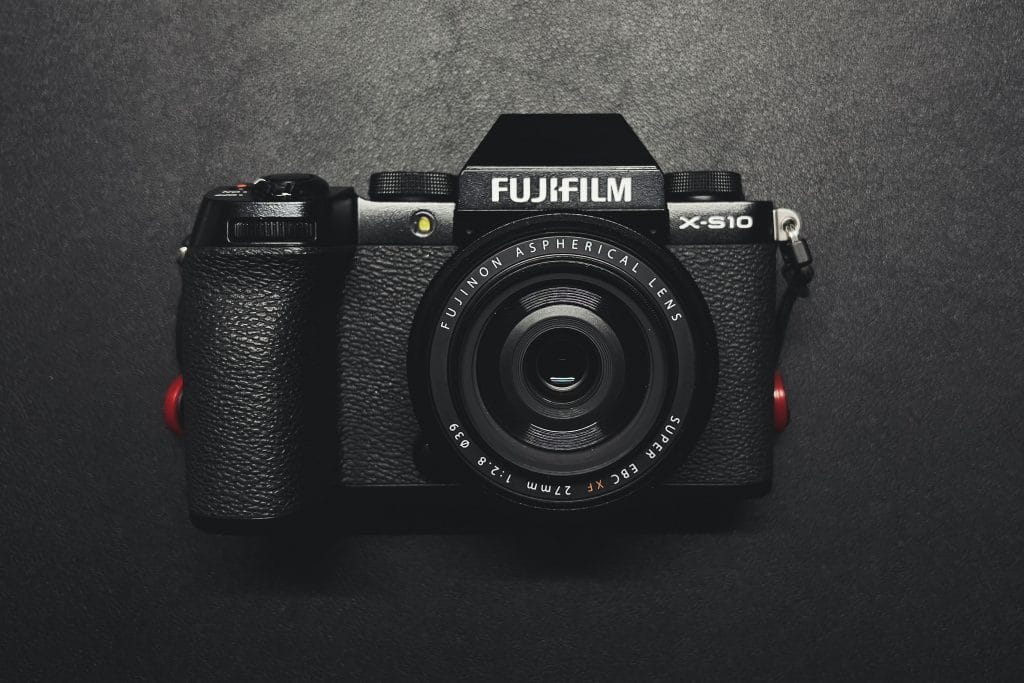
Best for Low Light
For a mid-range option, the Fujifilm X-S10 excels in low-light photography. Though it has an APS-C (cropped) sensor, the Fujifilm boasts in-camera image stabilization which helps with sharper images when shooting at slower shutter speeds in low lighting conditions and handles noise extremely well at higher ISOs when shooting at night.
The camera also has a lot of choices for lenses when shooting in low light, both from Fujijilm and third-party companies.
- Pros: great at lower ISOs and offers in-camera image stabilization
- Cons: cropped sensor makes it more difficult to crop images in post-production
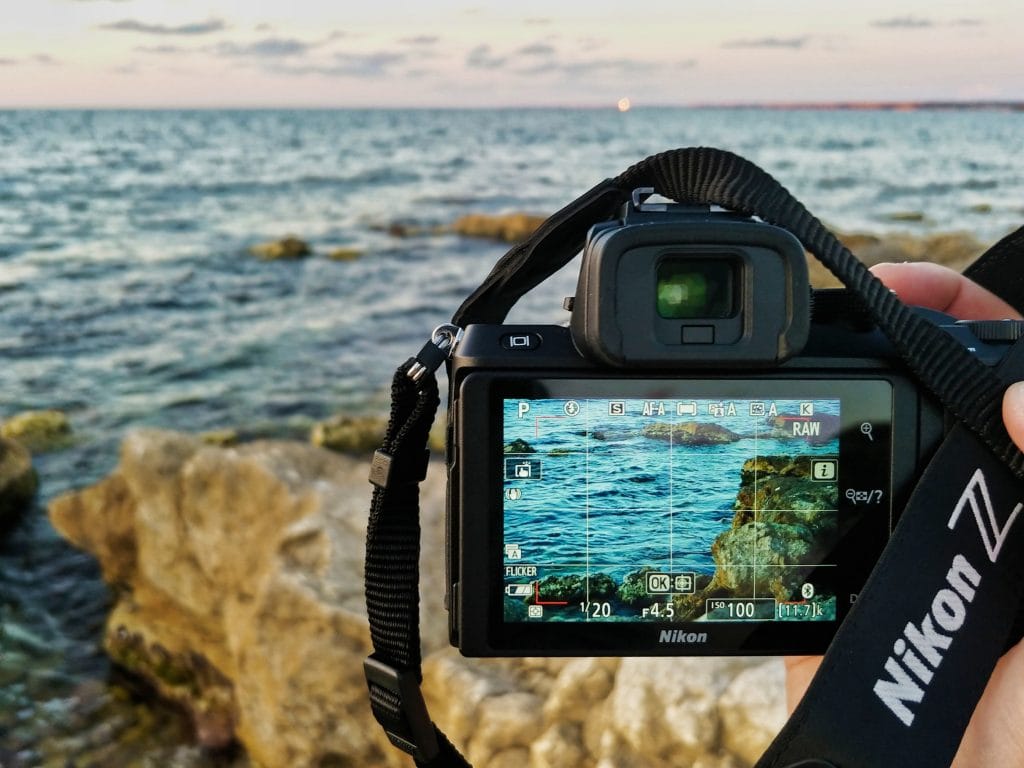
Best for Travel
When shopping for a camera, travelers are most concerned with portability. While a smartphone or point-and-shoot camera may work for some, those concerned with better image quality will want to opt for a mirrorless camera which has a bigger sensor size and more flexibility in choosing lens focal length for different views and scenery, but is still small enough to bring everywhere.
We chose the Nikon Z50 as it is one of the most compact and portable mirrorless cameras, but still packs a punch for travel photography. The body weighs in at only 395g, making it one of the lightest mirrorless cameras for travelers! Despite its size, the Z50 boasts an impressive 20.9MP sensor, 4K video support for travel vlogging, and a tilting touchscreen display to help you get that perfect shot while exploring the world.
- Pros: compact size and easy handling on the go; price point
- Cons: poor battery life; LCD screen flips under, which feels a bit clumsy
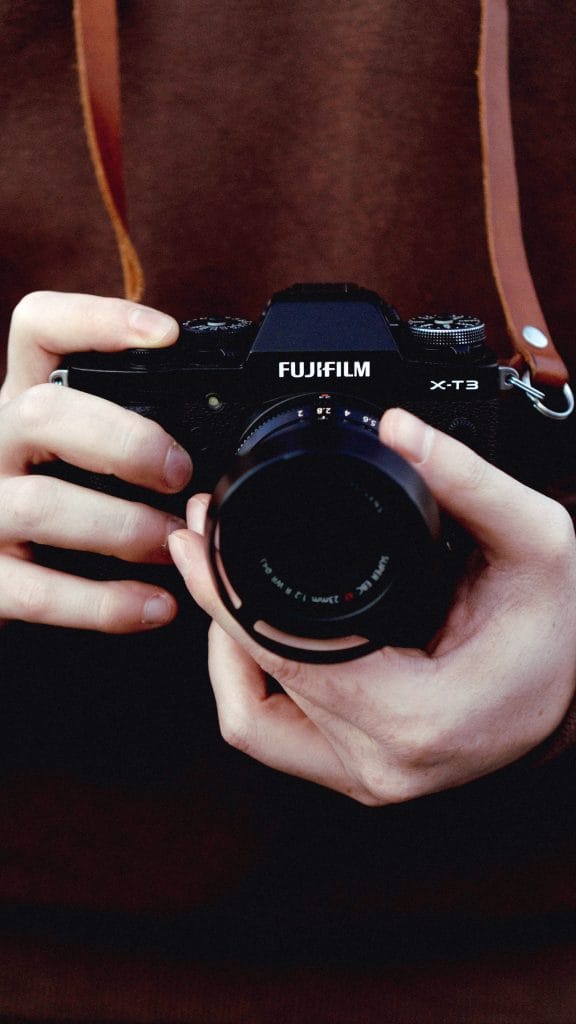
Best for Landscape Photography
For budding landscape photographers, mirrorless cameras are easier to cart around on outdoor adventures due to their portable size. Our choice for the best mirrorless camera for landscape photos is the Fujifilm X-T3. The X-T3’s 26.1-megapixel sensor, weather-sealed body, and array of lenses make landscape photography easier and more fun than ever.
Fujifilm’s lineup of lenses for this camera are extremely sharp and the camera’s JPEG colors are bright and natural, making it a top selection for mirrorless landscape photography.
- Pros: lightweight, weather sealed, sharp AF system
- Cons: Cropped APS-C sensor makes creating larger prints without grain or noise more difficult

Best for Portrait Photography
Our choice for best portrait camera is the Sony a7. As the earlier model of the a7 II noted above, the a7 still has a full-frame sensor and 24.3 megapixels, which allows for portraits photographers to more closely crop in on their portrait subjects without losing detail or sharpness.
Another reason this is a great camera is because of the incredible lineup of portrait lenses that Sony offers for this camera, including the 35mm, 55mm and 85mm prime lenses, which are super sharp and offer lower apertures like 1.4 or 1.8, making them excel even in low-light situations.
- Pros: Full-frame sensor and an array of lenses available great for portraits
- Cons: One of the older models in the Sony lineup; poor battery life
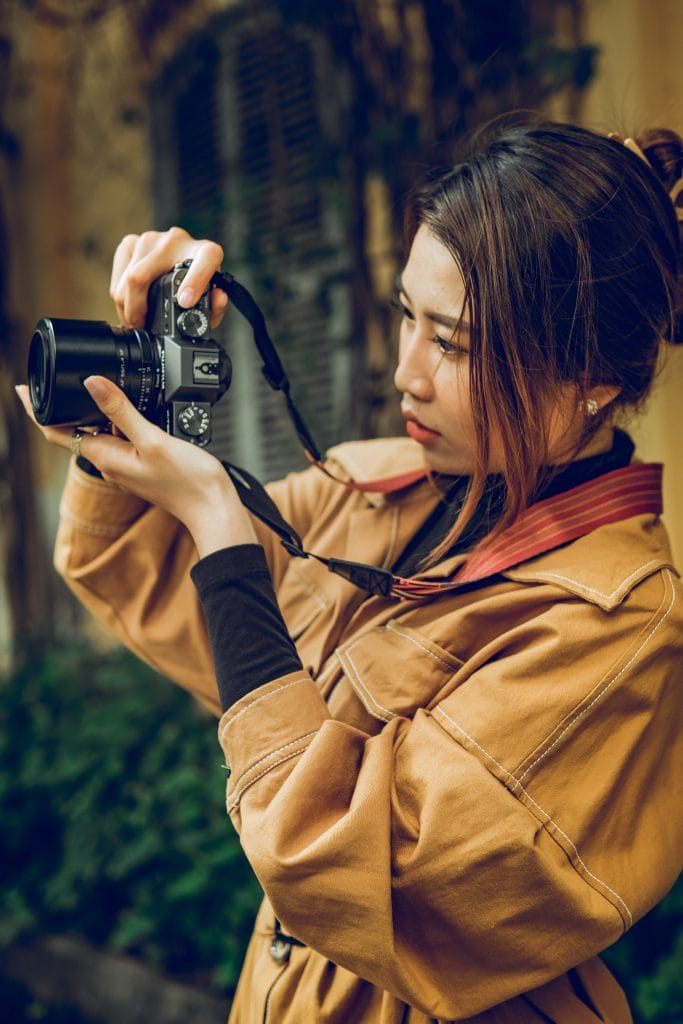
Best Brands for Mirrorless Cameras
When it comes to creating mirrorless cameras that stand up to ever-changing technology standards and also make even seasoned professionals question their DSLR cameras, these companies have paved the way for a mirrorless future. While these mirrorless camera creators differ a bit, you really can’t go wrong with any of them, depending on what you need.
Sony
Sony was one of the first companies on the scene with their mirrorless camera offerings and also one of the few companies to solely focus on mirrorless instead of both mirrorless and DSLR. Because of this, Sony quickly created a following of mirrorless photographers who switched to their cameras and are always waiting to see what Sony comes out with next.
Because of their focus on mirrorless, Sony also has one of the largest and most diverse lineup of lenses available for their mirrorless systems, making them a top choice for photographers who need variety in their lens choices.
Sony’s a7 models are their mid-range full-frame cameras, but still wind up in the hands of professionals looking for a camera with all the specifications they need, at a price point they appreciate. Then there are the “R” models, where the R stands for resolution and ultimately equates to double the number of megapixels in their sensors. These cameras are top-of-the-line models widely used by professionals in wildlife, sports, and landscape photography.
Nikon
When thinking of cameras, it’s likely that the brand name Nikon will immediately spring to mind. While Nikon has been a pioneer of SLR and DSLR cameras for decades, the company has been slower to integrate mirrorless cameras into its lineup. Still, Nikon has released its Z series which offers a full-frame sensor (which Nikon calls FX) that can hold its own with top-of-the-line competitors.
For photographers seeking a more compact form factor with well-considered controls, ergonomic styling, and the build quality Nikon is known for, Nikon also continues to expand it’s lineup of APS-C sensor size “DX” cameras and lenses.
When purchasing a Nikon mirrorless camera, you can expect to get an advanced system from a renowned company. Many photographers prefer the JPEG color rendition of Nikon cameras. Nikon also beats out competitors with things like its handling, menu layout, LED resolution, and touchscreen capabilities. However, one of the limitations you may likely run into is the number of lenses Nikon has available for its mirrorless cameras, though its DSLR lenses can be used on Nikon mirrorless cameras with a converter. The Nikon mirrorless lens lineup doesn’t compare to the quality and breadth of Sony’s lens offerings, which can feel limiting to more seasoned photographers.
Canon
Along with Nikon, Canon is likely the second camera brand most people think of when they consider professional and quality photography. Canon was also a bit sluggish when it came to releasing mirrorless cameras, but they have since begun to provide a larger offering of mirrorless systems to appease Canon loyalists who wanted more mirrorless options.
One notable difference between Canon and a competitor like Sony, also mentioned above in the Nikon section, is the color rendering. Many photographers believe Canon produces more lifelike colors and better rendering of natural skin tones. Canon also offers an intuitive and simple menu system when compared to a brand like Sony. The brand also lacks the number of native lenses for its mirrorless systems, but, like Nikon, its large DSLR lens catalog and be used for its mirrorless cameras with a converter.
Fujifilm
For longtime photographers who started on film cameras, Fujfilm is often the mirrorless camera of choice. When it comes to Fujifilm cameras, many photographers prefer the old-school design and array of external buttons and dials. Adjusting the settings on a Fujifilm mirrorless camera feels more similar to a film camera experience. Fujiflm’s attention to detail in its menu setup and use is a clear choice for many photographers.
One main drawback of Fujifilm mirrorless cameras is that there is still no offering of a model with a full-frame sensor, which is a major shortcoming compared to competitor models at similar price points that offer a full-frame sensor. However, Fujifilm mirrorless cameras continue to excel with landscape, low-light, and portrait photography using the CMOS sensor.
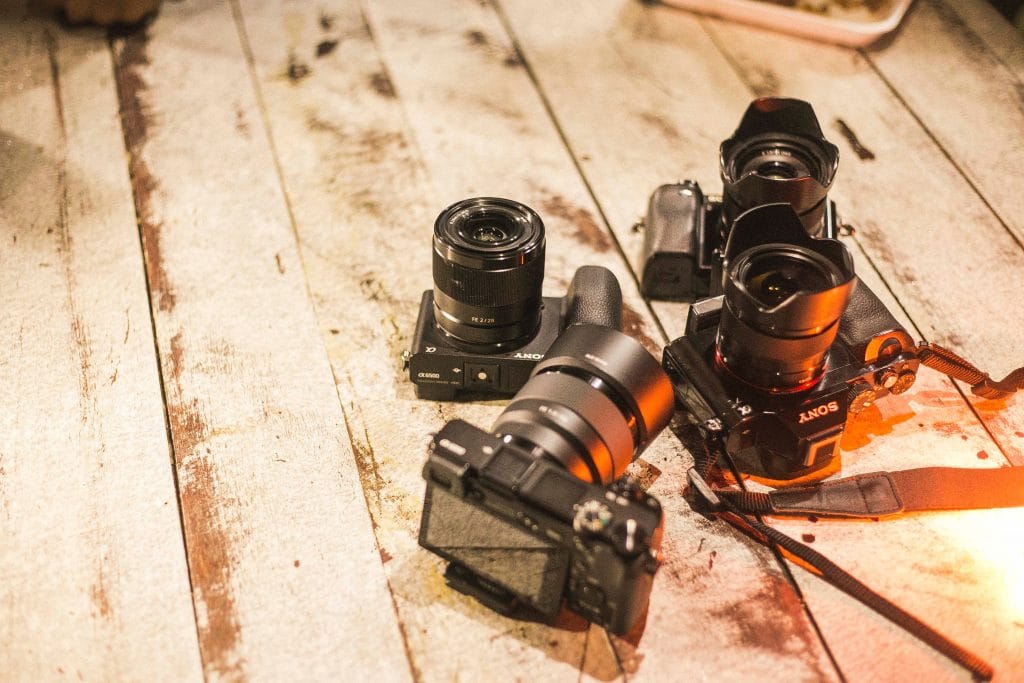
Shop High-Quality Used Mirrorless Cameras
Whether you’re thinking of switching to a mirrorless camera as a seasoned DSLR user or trying a mirrorless for the first time, buying a used camera from a reputable company will be the best way to save money on your purchase. It’s important to buy used from a company with a renowned reputation and a detailed grading system that allows you to understand exactly what you’re getting when you purchase a used mirrorless camera. KEH has a large selection of pre-owned mirrorless cameras and mirrorless camera lenses to fit any budget or need.

